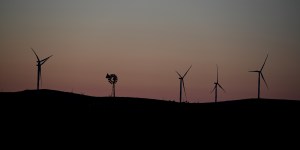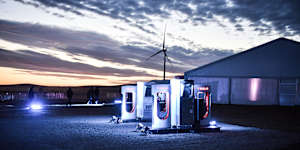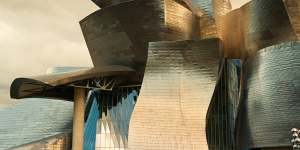
Rare earths are used in magnets that are components in wind turbines.Credit:Getty
So,as the US seeks to loosen its reliance on China,federal Resources Minister Matt Canavan has been promoting the potential for the Australian rare earths industry to ramp up export ties with the US.
Australia’s Lynas Corp,for example,is the biggest rare earths producer outside of China. Other Australian rare earths companies include Northern Minerals,Arafura and Alkana Resources.
The Minerals Council of Australia is excited about the “enormous potential” to grow national trade and investment through rare earths.
“Australia is well-positioned to extract and export the critical minerals the world needs for faster,smaller and more powerful technology,” says Minerals Council chief executive Tania Constable.
When miners in 16th-century Saxony were searching for precious metals such as gold and silver,they found cobalt instead. It looked like silver and they tried to smelt it but it emitted arsenic-containing fumes,hence the origins of the name,from the German kobold,meaning goblin or evil spirit.
Cobalt,usually a by-product of copper and nickel ore processing,is just one of five elements on the periodic table that is ferromagnetic,meaning it can be magnetised and retains a permanent charge. Today,it is the main power source for mobile phones and electric vehicles.
Cobalt is a key ingredient in lithium-ion rechargeable batteries – specifically,in the cathode,which is the positively charged electrode. It provides the stability and high-energy density that allows batteries to operate safely and for longer periods.
While the fast-growing electric vehicle market has led to a surge in cobalt exploration,its price has been rocketing in recent years before flattening in 2019 due to the same problem facing other battery raw materials – too much global supply too quickly.

A car-charging station at Tesla's wind and solar battery plant outside of Jamestown,South Australia.Credit:AAP
Although the ninth-largest producer of cobalt,Australia has the second-largest reserves of it in the world. About 45 per cent of the world’s deposits come from the Democratic Republic of Congo,according to consultancy giant KPMG. Reports of child labour and human rights abuses connected to cobalt mining in the African nation are common and have raised concerns for customers,including some of the world’s biggest automakers,about the conditions in which the mineral is being mined.
In Australia,Cobalt has been produced by mines in Western Australia and South Australia.
Cobalt’s use dates back to ancient Egypt,in the rich,blue pigment decorating ceramics and glassware. But cobalt is also essential in the structure of vitamin B12,and it has been illicitly used to enhance endurance in athletes.
Research in the 1940s and 1950s showed mice produce more red blood cells and haemoglobin when given cobalt. The more red blood cells generated,the greater the ability to carry oxygen and this allows peak performance levels to be maintained longer.
Cobalt naturally appears in horses but racing authorities across the world set a threshold when stewards found cases of trainers upping the level of cobalt in their horses to enhance performance.
In the 1960s,beer brewers added a cobalt compound to beers to maintain the head on a beer for longer. But,after a rash of heart disease and deaths in heavy beer drinkers,the US Food and Drug Administration banned the substance after evidence showed cobalt was causing “cobalt-beer cardiomyopathy”.
As strong as steel but 45 per cent lighter, titanium is the ninth-most abundant element in the Earth’s crust. It occurs in what’s known as “mineral sands” deposits,particularly ilmenite and rutile,of which Australia is the world’s biggest producer.
Named after the Titans of Greek mythology,titanium is a relatively modern metal when compared to iron and copper,which have been around for thousands of years. First commercially produced in the 1940s,its strength,corrosion resistance and extremely high melting point make it ideal for use in aeroplanes,spacecraft,missiles,sports equipment and bike frames.
Most beach sands consist of the grains of the mineral quartz. Mineral sands,however,are old beach,river or dune sands,explains Geoscience Australia,that contain concentrations of rutile and ilmenite,zircon and monazite. These heavy minerals are heavier than common sand minerals.
In Australia,mineral sands deposits containing rutile and ilmenite are found mostly on the eastern,western and southern coastlines. Large deposits from old beaches,known as relic deposits,lie as far inland as Ouyen in Victoria (Wemen,Bondi,Kulwin deposits) and in south-western New South Wales (Ginkgo,Snapper deposits),according to Geoscience Australia.
Deposits also exist in the Eucla Basin around the Great Australian Bight. In WA,deposits are distributed from the southern tip of the state to Geraldton,at the present coastline or at old beaches up to 35 kilometres inland.
Titanium dioxide is one of the whitest and brightest substances known and is often used as a pigment in paints,paper and toothpaste.
Architect Frank Gehry also recognised titanium's appeal:his Guggenheim Museum in Bilbao in Spain is covered in 33,000 wafer-thin titanium sheets.

The facade of the Guggenheim museum in Bilbao,Spain,is covered in titanium.Credit:Getty